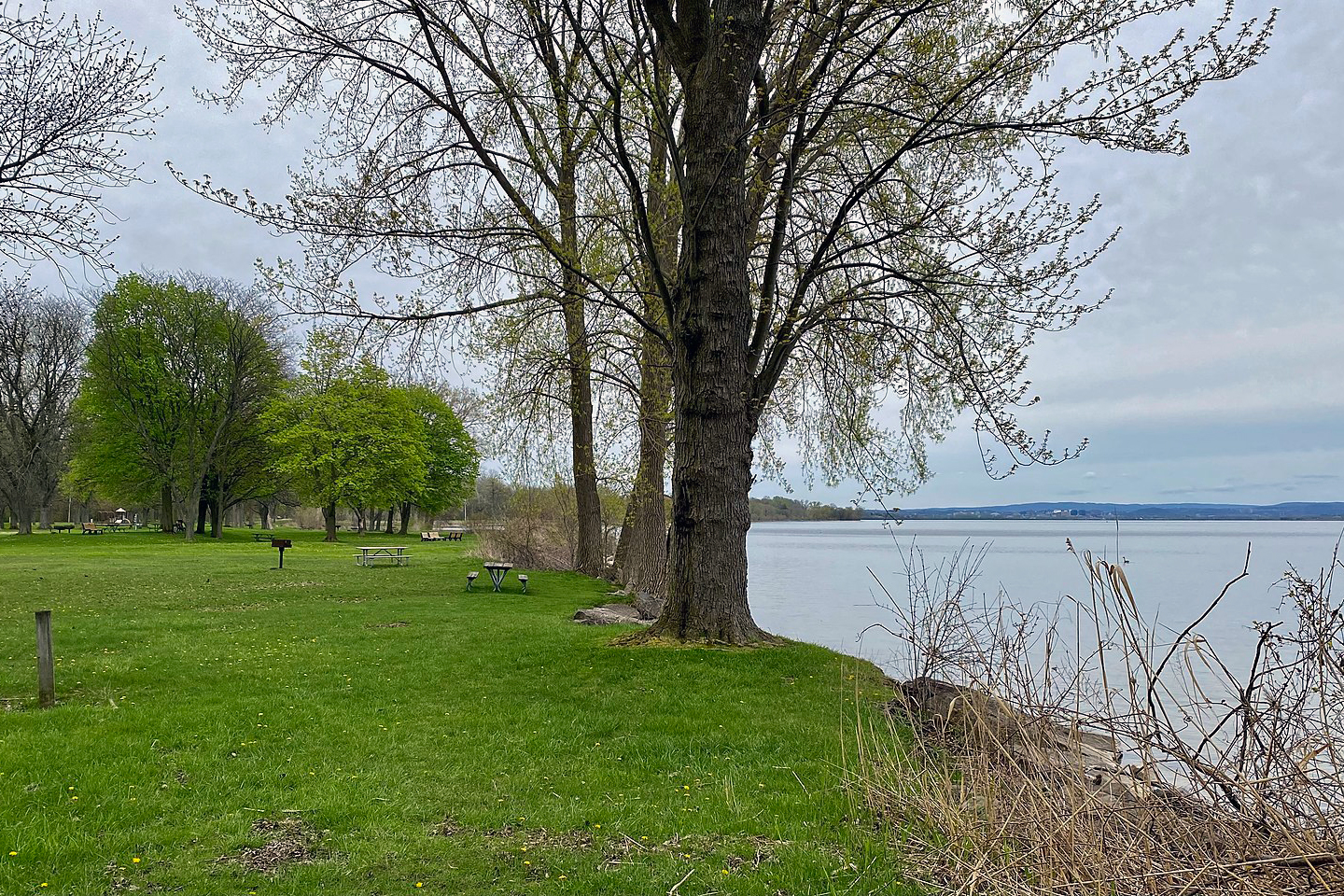What’s really going on with Onondaga Lake?
What's really going on with Onondaga Lake?

Onondaga Lake has been the butt of the three-eyed fish joke for a long time now–ever since the ‘80s and ‘90s when a combination of industrial and sewage waste rendered it a hazardous body of water more akin to a swamp. Now, experts say mercury levels in its fish are lower than those measured in the Adirondacks, and Onondaga County plans to build a $5.1 million swimming beach on the lake’s northern end.
This is a very different body of water than the biohazard it was 40 years ago, but residents continue to hold suspicions about its safety. The dredging and capping of toxic lake sediments has been heralded as a success by Onondaga County executives, but some local environmental organizations and residents believe that what has been done is far from adequate.
So what really is the status of Onondaga Lake?

What was wrong in the first place?
Onondaga Lake faced two separate, but equally concerning issues: industrial waste and wastewater. The former resulted from companies–namely Honeywellz–dumping toxic chemicals into nearby ponds that fed the lake. The mercury settled at the bottom of the lake and eventually made its way into the ecosystem’s food chain, resulting in highly contaminated fish and many three-eyed fish memes (or whatever the ’90s equivalent of a meme is). The latter issue, wastewater, was caused by poor drainage and sewage contamination leading to the growth of harmful bacteria.
For a while, the lake really was the cesspool people joke that it is.
Charles Driscoll is a professor of environmental systems at Syracuse University, specializing in aquatic and soil chemistry and environmental engineering. He has seen and studied Onondaga Lake throughout its revitalization and testified to its remediation and the validity of its positive results.
“[Onondaga Lake] used to have high concentrations of bacteria from waste and sewage, and those are way down,” Driscoll said. “It meets all water quality standards.”
Work on the lake’s water quality was separate and involved a revamping of the area’s water treatment facilities and stormwater system.
“They upgraded the wastewater treatment plant, so it’s a very actually impressive, very modern plant that removes nutrient concentrations to low levels,” Driscoll said. “Those are meeting the guidance values that were established before.”
View this post on Instagram
To address the industrial waste, the decision was made in 2005 to remediate Onondaga Lake by dredging and capping the sediments. This process included removing 2.2 of the 20 million cubic yards of toxins within the lake and putting a layer over the remaining material as a barrier. All this was done with the goal of reducing toxin levels in aquatic life.
“The lake did not have swimming restrictions associated with the industrial waste,” Travis Glazier, former director of the Office of the Environment, said. “There was mercury in the soil, there was methylmercury in the water, but there was never a human health threat to swim or be exposed to those soils; whereas, the swimmable portion had to do with the wastewater treatment plant and the bacteria they were releasing into the lake.”
This is a significant differentiation. The danger of mercury is in its ingestion. So, the true threat to human health from swimming in the lake would be a result of the wastewater issue more so than the industrial waste. Regardless, both problems have been the county’s priority.
What now?
Many think these efforts are not enough.
“They’ve left 90% of the toxic chemicals in place in the lake sediment, and then they try to contain it,” Joe Heath, legal executive for the Onondaga Nation, said.
He voices what seems to be a popular concern for the county: that what was done was insufficient.
“What we have is an industrial waste landfill on the bottom of a lake,” Alma Lowry, Onondaga Nation’s environmental attorney, said. “It’s a solution that’s going to require someone to be paying attention to the lake bottom for the next thousand years or more.”
The most recent test was conducted in 2018, but steady monitoring is ongoing and occurred as recently as last fall, according to Driscoll. He said that the decision was made to cap sediment because it contains organic matter necessary for the survival of the lake’s ecosystem.
“That organic matter is food for the bacteria and the algae that the insects eat and then the fish eat,” Driscoll said. “If you got rid of all of the sediments and the organic matter in the sediments, you would destroy the lake.”
A layer of calcium nitrate helps seal any remaining contaminants on the lake floor.
“The long and short of that is that the remedy was functioning as it was designed to do and was operating slightly ahead of schedule, which meant the fish had slightly lower rates of mercury than they had anticipated in the five year cycle,” Glazier said. “Basically it’s performing as it was designed to do–keeping any of the remaining mercury soils away from the fish, and then the fish over time cycle out the mercury.”
Glazier said that the closing of sewer overflows, water treatment plant improvement and the cleanup of the water itself all combined to leave Onondaga Lake a clean and swimmable body of water. While understandable, concerns about mercury poisoning and health risks are unfounded, according to Glazier.
Since its addition to the federal Superfund National Priority List in 1994, roughly $1.5 billion in research and remediation work have been poured into Onondaga Lake.
“From my perspective, it’s quite a success story,” Driscoll said. “The mercury content is below the analytical detection limit, probably lower than any other water body in the state of New York. I understand people are concerned, but this was a massive effort. It was a very, very expensive approach. It was using state-of-the-art technology, and I don’t know what could be done that would be better.”





